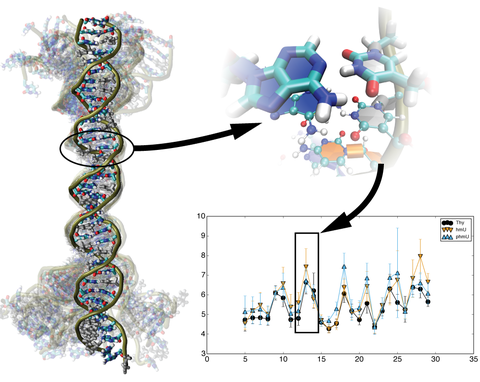Analyzing the Changes in DNA Flexibility due to Base Modifications Using NAMD
DNA is the blueprint for cellular structure and function, and changes to this blueprint can have wide-ranging effects on the health of the cell, as well as the health of people and organisms that are made up of these cells. One modification, 5-methylcytosine (5-mC), is found in most plants, animals and fungi, and has a profound effect on genome stability, gene expression, and development. One of the known effects of 5-mC modification is an increase in stiffness of DNA duplexes incorporating this modification. It is also thought that the increased stiffness has a direct effect on the expression rate of affected DNA. In addition to 5-mC, other modifications have been discovered, that could have an effect on gene expression and cell differentiation, such as 5-hydroxymethylcytosine, 5-formylcytosine, 5-carboxylcytosine, 5-methyluracil, and 5-hydroxymethyluracil. In addition, simple changes in sequence can also cause changes in flexibility.
In order to analyze changes in flexibility due to DNA modificaitons or sequence alterations, we have devised a protocol to simulate using all-atom molecular dynamics arbitrary sequences of DNA -- and then analyze the trajectories to measure the flexibility of these sequences. By simulating both a control sequence, and a sequence with a small alteration, we can deduce the effect that the alteration has on the flexibility. By following the tutorial we have provided, you will be able to simulate sequences of DNA that are of importance in your research, and produce paper-ready figures outlining the differences in flexibility caused by your modifications.
